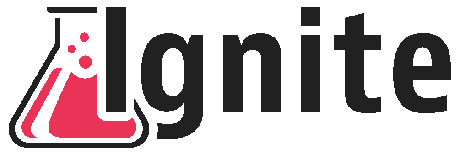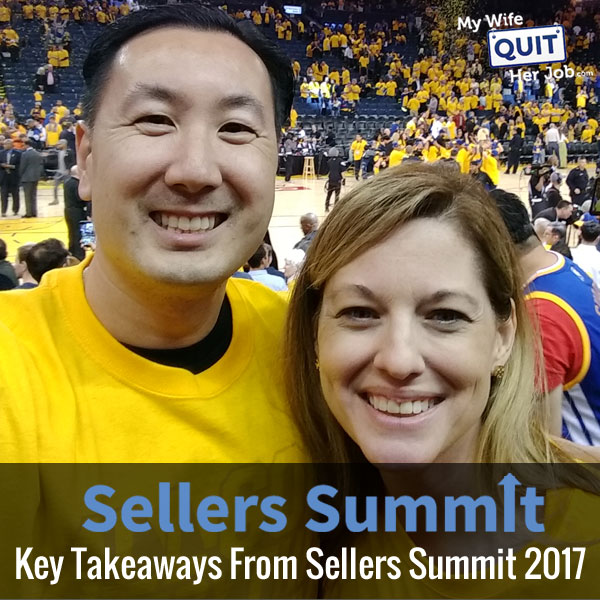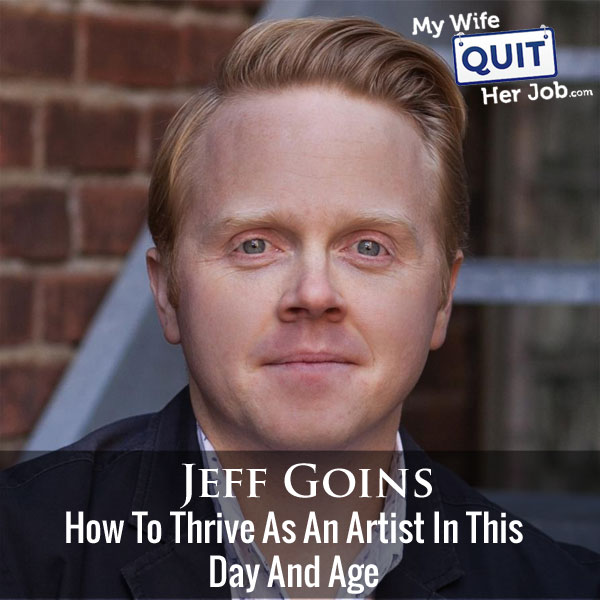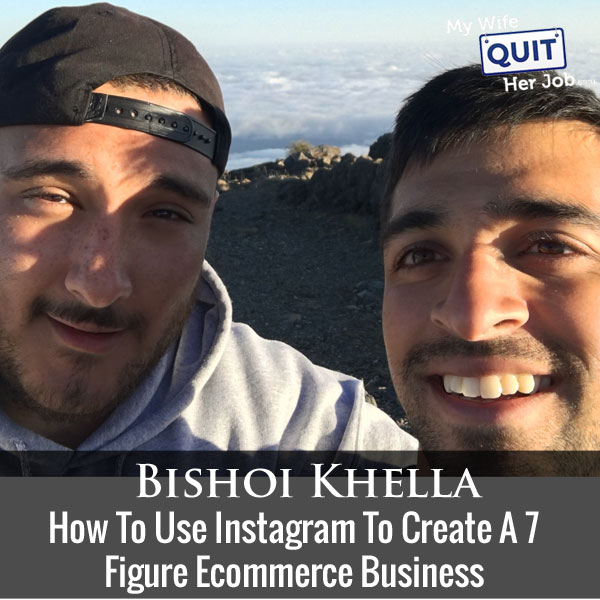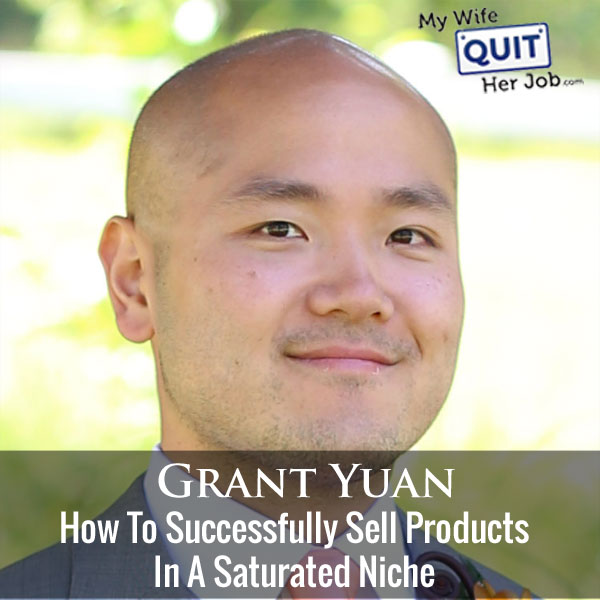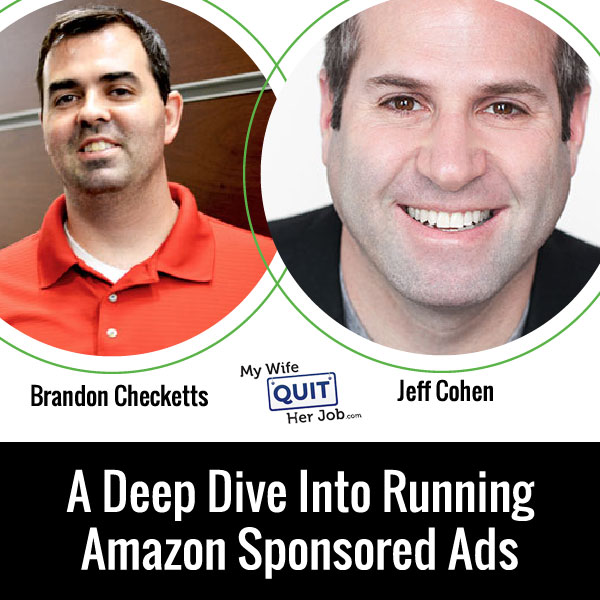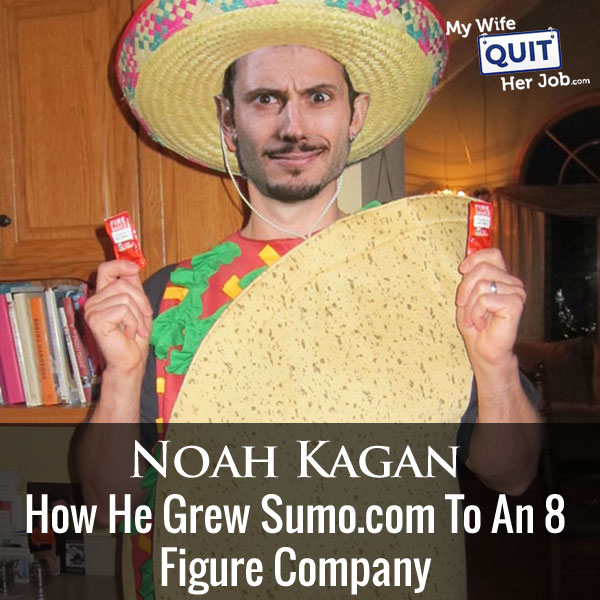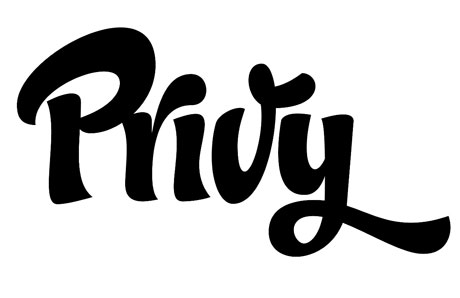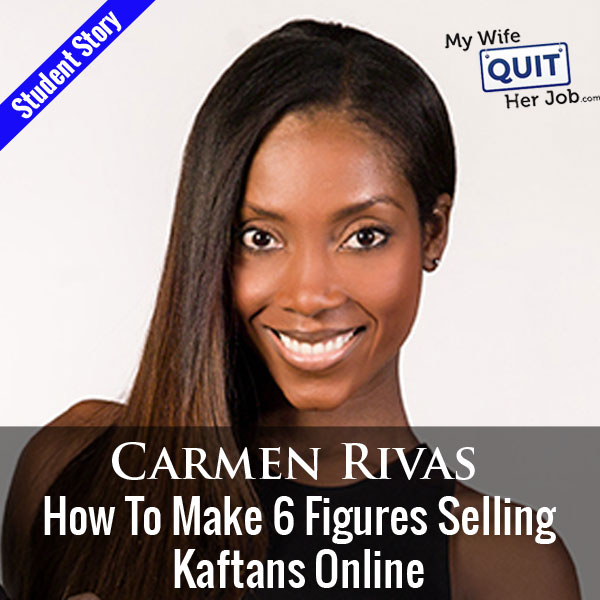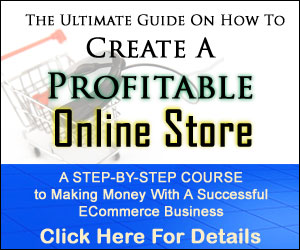Podcast: Download (Duration: 53:36 — 61.6MB)
Today I’m excited to have Sue B Zimmerman on the show. Now Sue and I met through a mutual friend and I actually recently watched her speak at Ryan Deiss’ Traffic and Conversion Summit.
She is known as the Instagram Expert and travels across the world sharing her Instagram expertise. Today we are going to explore ways on how to increase your Instagram following and how to use Instagram to sell your products online.
What You’ll Learn
- Sue’s strategy for building an Instagram audience
- Where to start building your following
- How Sue recommends generating content for Instagram.
- The tools she uses to post on Instagram.
- How she collaborates with other Instagrammers.
Other Resources And Books
Sponsors
Klaviyo.com – Klaviyo is the email marketing platform that I personally use for my ecommerce store. Created specifically for ecommerce, it is the best email marketing provider that I’ve used to date. Click here and try Klaviyo for FREE.
Ignite.Sellerlabs.com – If you are selling on Amazon and running Amazon Sponsored Ads campaigns, then Ignite from Seller Labs is a must have tool. Click here and get a FREE 30 Day Trial.
ReferralCandy.com – If you’re already getting steady orders every month, adding a refer-a-friend program to your store can give you a new sales channel. And ReferralCandy is the best in the business. Click here and get a FREE $50 credit towards your account.
Transcript
Now today I’m thrilled to have Sue B. Zimmerman on the show. And if you don’t know who Sue is, she is actually known as the Instagram expert, and she is going to teach us today how to start a highly engaged IG account.
But before we begin I want to give a quick shout out to Seller Labs who is a sponsor of the show. And specifically I want to talk about their brand new tool Ignite which helps sellers manage their Amazon sponsored ad campaigns. Right now I’m actually using this tool to manage my Amazon sponsored ad campaigns, and it makes things a heck of a lot more convenient.
So number one I’ve always found it a major pain to generate my PPC reports on Amazon, cut and paste the data over to an excel spreadsheet and use pivot tables before I’m able do any analysis. Now Ignite pulls all that info for you automatically and allows you to easily see what keywords are working and what are not immediately, there is no need to manually create reports or play with excel.
Second of all unless you’re a data geek, Amazon campaign data can be hard to understand, and what is cool is that Ignite makes keyword and bidding recommendations on the fly that can be applied with just a couple of clicks.
So let’s say one of my hankie keywords is bleeding money, well Ignite will alert me of that fact, and I can reduce that bid immediately. So bottom line Ignite makes managing your Amazon’s sponsored campaigns so much easier, and the fact that they provide me with alerts means that I no longer have to monitor my campaigns like a hawk.
So if there are keywords that are doing well, Ignite will tell me to add them to my exact match campaigns. If my keywords are losing money, well Ignite tells me to either remove the keyword or to reduce the bid. So head on over to sellerlabs.com/steve where you’ll find awesome tutorials on how to run Amazon PPC ads and the opportunity to try Ignite for 30 days for free. Once again that’s sellerlabs.com/steve.
Now I also want to give a shout out to Klaviyo who is also a sponsor of the show. I’m always super excited to talk about Klaviyo because they are the email marketing platform that I personally use for my ecommerce store, and I actually depend on them for over 20% of my revenues. Now you’re probably wondering why Klaviyo and not another email provider. Well Klaviyo is the only email platform out there that is specifically built for ecommerce stores, and here is why it’s so powerful.
Klaviyo can track every single customer who has shopped in your store and exactly what they bought, and that makes it extremely powerful. So let’s say I want to send an email to everyone who purchased a red handkerchief in the last week, easy. Let’s say I want to set up a special auto-responder sequence to my customers depending on what they bought, that’s piece of cake, and there is full revenue tracking on every single email that I send.
So Klaviyo is the most powerful email platform that I’ve ever used, and you can try them for free at mywifequitherjob.com/K-L-A-V-I-Y-O, once again that’s mywifequitherjob.com/K-L-A-V-I-Y-O. Now on to the show.
Intro: Welcome to the My Wife Quit Her Job Podcast. We will teach you how to create a business that suits your lifestyle, so you can spend more time with your family and focus on doing the things that you love. Here is your host, Steve Chou.
Steve: Welcome to the My Wife Quit Her Job Podcast. Today I’m excited to have Sue B. Zimmerman on the show. Now, Sue and I met through a Mutual friend and I actually recently watched her speak at Ryan Deiss’s Traffic and Conversion Summit. Now, she is known as the Instagram expert and travels across the world sharing her Instagram expertise.
She also runs two popular online courses called Ready Set Gram and Insta Academy, and she’s actually a well-known speaker that specializes in Instagram. So today what we are going to do is we are going to explore ways on how to increase your Instagram following, and how to use Instagram to sell your products online. And with that, welcome to the show Sue, how are you doing today?
Sue: Hey, it’s so great to be here, and yeah Ryan Deiss’s event just like rocked the house. That was the largest stage I have ever spoken on in my life, and I have to be honest, I was a little nervous.
Steve: So what’s funny is I was going to approach you afterwards, but then you were mobbed with like 20 people and I didn’t think I could fight my way into the middle there so.
Sue: Yeah, I think it’s because I was giving away a pen that really enables people to do Instagram stories, and because the conference is primarily men, their fingers are large, and it’s hard to do like the fine script on a phone. So everyone wanted a pen and I shoed everybody out into the hallway where there was really good, what I call #hotelfilterforgoodlighting, so we could take a ton of photos to post on Instagram. So like, I gave a little workshop in how to take the perfect selfie photo after.
Steve: What’s funny is one of those few conferences where there is always a line for like the men’s room, but there is no line for the women’s room which I always find odd.
Sue: Exactly, exactly, yeah.
Steve: So Sue, how did you get started in business and kind of what led you to specialize in Instagram?
Sue: Yeah, great question. So I’ve been an entrepreneur my whole life, I actually had my very first business when I was a teenager. And then through the years I’ve always been that person that saw opportunities and trends in primarily consumer product space. I was heavily involved with clocks and [inaudible 00:05:44], the little two dots that you put in the clocks.
And I even was on stage at QBC, with one of my businesses which was a double sided sticky tape that allowed scrap bookers to embellish their photos, because I’m the person who has always loved photos and my most prized possessions are my photographs.
And so it’s really ironic fast forward eight years after being on stage at QBC that I’m now teaching a global audience how to embellish their photos to put on Instagram, their digital platform using third party apps, and all kinds of fun tools to really enhance what I call their digital magazines.
Steve: You are thinking giblets, yeah.
Sue: And yeah, gibits [ph] to go, yeah digital magazine because like I, Steve, I believe that Instagram is essentially that, it is your digital magazine for your business, your brand your product or your service where if you craft the perfect bio, and we certainly can go over with that is a new show, awesome photos or videos not only per post, but they cohesively all go together as a whole magazine.
You can certainly attract the right followers, the right customers, the right clients and ultimately grow your business, and I really think that there is a big disconnect with you know, people understanding this. And so when I had my retail store on Cape Cod I was selling clothing, jewelry, and accessories all with a very preppy, nautical vibe.
And I quickly learnt that by posting images around the products that I sold, not just the products that I sold but the beach and the sunset and the yachts, and like the whole vibe of Cape Cod and Hide Ranges- which always got a lot of likes, I could essentially craft that perfect magazine. And eventually my business throughout that summer grew 40% from using Instagram, and before using Instagram I was using all of other social, because I taught social media off season when I did run my store.
So I’ve been versed in social media, I’m very visual; I catch trends and opportunities before they go mainstream. And I knew that Instagram was going to be a big deal because of the visual component, because of that magazine opportunity that you – and even because people always say, when they were walking in my store and they are like, “Can I post– can I take a picture of…
Steve: This is the physical store?
Sue: Yeah.
Steve: Okay, got it.
Sue: The physical store and I had an ecommerce store. Yeah, so people would walk into my store and I would always ask them after they purchase something if I could take a picture and usually they were like holding up what they bought, and they are like, ‘sure.’ And they are like, “Oh my God! I love Instagram.” And I’d be like, why do you love Instagram? And the answer over and over and over again Steve was, because it’s fun, it’s fun. And I don’t think people think of social media as fun, I think that they think of it as a time sack, and often pull down rabbit holes.
So I knew I was onto something from the success that I had at my store. And because I love teaching, empowering and helping other people make money, I knew that I had a platform to teach. And so I just started teaching, but you’ll be excited to hear that the way I got on stage and stage is all over the world is from doing podcast interviews, and the very first…
Steve: Interesting.
Sue: Yeah the very first one I did was with Michael Stelzner, the owner of Social Media Examiner. And as soon as he was done interviewing me he was like, “Damn, I need to get you on stage in Social Media Marketing World,” and I’ve been there speaking ever since.
Steve: That’s funny because that’s how I met Mike. He just had me on the podcast. The podcast literally went live like three days ago or whenever you post them, and so are you telling me that the speaker engagements should start coming in any minute now?
Sue: Oh, yeah, I mean, well here is the thing I believe. When you — I say yes to pretty much every podcast opportunity as long as it aligns with kind of where I am in my niches, and they have the market that I want to amplify and broadcast to, because I love that I get interviewed from people all over the world. From Australia, from Israel, France, Spain and I’m talking and people are, you know- I’m in their ears all over the world, and then they are opting into my email list because I have a free download that I talk about, and they are coming into my community, and that is how you grow a business.
Steve: Let me ask you this. I was curious when you were talking about growing your businesses 40%, the one on Cape Cod, were people actually going to your bio and clicking on the link, or were you getting that data from just whenever someone made a purchase you asked them, how they found you?
Sue: Exactly.
Steve: Okay.
Sue: So my store was tiny, like 10 x 12 on the inside, and then I got to merchandise on the outside and so it was a very, very intimate store in a community, like in a country club community.
Steve: Okay.
Sue: So it was kind of like friends and family and then you know visitors from the Cape. So every time someone checked out, it was mandatory for my employees to ask, how did they find us.
Steve: Got it, okay.
Sue: And often they would hold up their phone and say, “Oh my God! This picture on Instagram.” Like I have to have this anchor bracelet or I need this tunic, and by the way to the guys on the call, tunic is like a beach cover up.
Steve: Okay.
Sue: So yeah, so they would check a box and we would know where that sale was originated from.
Steve: Okay, and then in terms of your brand, Sue B. Zimmerman, where you teach these classes, like how do you generate traffic to that site? Is it primarily Instagram traffic also that leads to your courses and classes?
Sue: So that’s a great question, so the way my business model is set up is that we craft an epic blog post every week, and in that blog post not only is it written words teaching, but also a YouTube video. So I have a YouTube channel and today we hit 10,000 subscribers.
Steve: Nice.
Sue: So I’m super excited about that, and we get a lot of traffic from YouTube because of the search engine optimization from Goggle obviously.
Steve: Okay.
Sue: And when we publish that blog post Steve, we create custom links, UTM links so we can track, and we have different links for all of social. So we have a link for Instagram, Facebook, Twitter, YouTube. Those are primarily the spaces where I am most frequently broadcasting.
Steve: Okay.
Sue: And so we are able to track the success. Now we treat each blog essentially like a launch. So the blog is published, it goes to our email list first because those are the people who know, like, and trust me and are already in on the inside of my life and community, and have some connection to me. And then they are more likely to share it, comment on the blog and then after it’s gone out to our email list, that’s when I’m all in on social.
So that’s when I would post on Instagram, both my personal page @SueBZimmerman, my business page @theInstagramexpert, and occasionally on my company page which is @spzteam which is my team page, my team manages that.
Steve: Okay.
Sue: So we will amplify on Insta. I used to do a live stream on Periscope; I was an early adopter on Periscope. I have over 22,000 followers there, but things have really changed significantly over the years since being there. So now I amplify on Facebook Live, and I now have an Instagram Live strategy that I’m using to amplify even though it goes away as soon as you stop the broadcast.
Steve: Are you using that instead of Periscope now?
Sue: Yeah. It’s so funny you asked that, like as of yesterday, when I talked about a webinar that I’m doing this Thursday, I went on Periscope first, I had only 53 people watching live, and then I had a lot of replay, and then I did my second Instagram Live ever and I had over 360 people on.
Steve: Okay.
Sue: And here is the thing, they were so happy to see me, they were so engaged in like, “Oh my God! Sue is on Instagram Live, this is so great.” And I’m like, “Ask me a question, ask me anything.” And they are like, “Are you kidding me? This is amazing, I have Sue’s attention.”
So I know that Instagram Live is a good place for me to be. So now we’ve got the blog, it sits on our website. In the blog we also have some links to our free strategy guide, we have some links encouraging our audience to click to tweet, and we’ve got people leaving comments and people sharing it.
And I’m really proud of this blog because this year we were nominated as one of the top ten blogs from Social Media Examiner. So just to have that credibility, and the reason I’m saying this is not to brag but to say when you go all in and commit to doing something consistently over time, it really can pay off. And so we knew this is where we needed to create stellar content and become known as the Instagram educator. And I know my handle name is the Instagram expert, but I like to pride myself on being a really great teacher and educator.
So that is essentially what we do, and so the link on Instagram Steve, gets changed out for the various reason. One, usually the link is our Instagram strategy guide, and that’s what you see most frequently.
Steve: Okay.
Sue: That sits on our website, that sits on our Facebook page, but if we are in a launch, like I was when I did Marie Forleo B School a couple of weeks ago, and right now I’m in a launch with my business coach Lisa Larter, we have a webinar for Thursday. We switched out all those UTMs; we go all in on the launch. And right now we are driving traffic to synapse for the webinar, but before that we were driving traffic to our blog, and the article on our blog had to do with the content that people would want who would sign up for the webinar.
So it’s all about money, money mindset, like how to get a handle on your money. So the bog always matches up to the campaign that we are doing. So we can — you will love this obviously, we can drive traffic once people click on our blog, we can retarget with Facebook ads.
Steve: Sure.
Sue: And so the blog is always the seed to the next content, to the next campaign. And when I say seed it’s like we are not selling anything, we are giving great value through content that we can amplify. And then this Thursday when I do the webinar, you know right now my link is for signing up for the webinar, and then after the webinar the link will get switched out to purchasing the course or the class that we are offering from the webinar.
So it’s very, very strategic and it’s very formulaic, and we’ve had great success with launches when we do it this way, did that all make sense?
Steve: Yes. Let me ask you this, so there is a couple of things that you said there, so wherever you put together a blog post, you use the link in your Instagram and usually that link is the link to your blog post unless you are doing some sort of launch or promotion, is that accurate?
Sue: Yes, a launch or promotion and then when we are done with the launch or the promotion we go back to the strategy guide. The strategy guide, my Instagram strategy guide is always our list builder.
Steve: Okay.
Sue: So Suebzimmerman.com/guide gets anyone listening, our 17 page free Instagram guide, and that is where we build that. I know they can trust factor because we do have a nurture sequence, about seven days after you opt-in to that guide where you really get to know me more.
Steve: It sounds like that would be a better link because you are getting an email list, an email address as opposed to just a regular blog post, right? So Like what percentage do you have that link up as opposed to the content?
Sue: 75 to 80.
Steve: Okay, 75 meaning the opt-in or?
Sue: The opt-in, the opt-in is there most frequently.
Steve: Okay, got it, got it. Okay, and then once you have them you probably have an auto responder sequence that walks them through.
Sue: Yes, yes.
Steve: Okay, I’m just curious myself, like, how big is your Instagram following and like how much traffic does it actually drive?
Sue: Great question, so because I have three different accounts, there is — some of the followers probably follow me on both, so I have — I’m opening up Instagram right now. I don’t pay attention to my numbers as much other people might, but I have 46,900 on my personal account.
Steve: Okay.
Sue: So that’s a shit ton, that’s a shit ton, right? And then I’ve got on the Instagram expert which is my business account where I share Instagram tips, tools and strategies, I have almost a 1,000 more 47.7.
Steve: Okay.
Sue: And then on my team account we have almost 3,000, and here is what I want to say to the listeners. I have a ton of people following me and a lot of those followers could be 13 year olds for all I know, and aren’t necessarily my ideal followers. I really wish that people would unfollow me who aren’t there to engage, because they kill my engagement rate.
So you know, I get suggested to be a follower because in the bio on Instagram it says, I’m an Instagram marketer. So anyone searching for Instagram or marketing, I come up and they start following me. I pay attention to those who leave real authentic comments, and who actually engage in my content. To answer your question, we get about 250 opt-ins a week from Instagram.
Steve: Okay, okay.
Sue: So I care more about that number than my followers, and from that we can nurture people over time. Now this is not including any paid ads or Facebook and all the other stuff, you know.
Steve: Of course, these are just people clicking on your link in the bio and actually signing up.
Sue: Yes, yes exactly.
Steve: Okay, got it. And let’s switch gears a little bit. Let’s talk about selling physical products, because a large portion of my audience sells either on their own store or on Amazon. And so what I want to do today is let’s pretend that I’m an ecommerce store, which I am actually selling physical products, so it’s not that large of a stretch, and I’ve come to you for help, right? So what questions would you ask me, and how do you formulate a social media strategy?
So for example, my store I sell wedding handkerchiefs and wedding linens. So if I were to come to you for help, like how would you walk me through an Instagram strategy?
Sue: Well I love it that you have a very niche account; a lot of people don’t have that. So you are not just wedding, because wedding is so broad.
Steve: Right.
Sue: You got handkerchiefs and that’s so cool, like I love that. So what’s the most important thing for people to think with an Instagram strategy is who is your customer, and where do they hang out. You literary need to know where they hang out, where they vacation, where they shop, what their interests are. And I’m actually going to use one of my favorite Instagram accounts to really go deep with this stuff.
Steve: Sure, sure.
Sue: So the Drybar which is one of my favorite Instagram accounts is where you can go and get a blow out. So Alli Webb is the owner of the Drybar, I met her on [inaudible 00:21:32] Interview with her back in the day when Blab was a thing, and she not only has physical locations in the US, she also has some in Canada.
What I love about the Drybar are so many things. The main thing is that when I physically walk into the Drybar, I literally feel like I’m walking into their Instagram account. Alli knows that her customer who sits in the chair to get a blow dry has kids, likes fashion, likes fresh flowers, lots of people have dogs and they like funny quotes.
And so when you look at that Instagram account, it’s not just about a blow dry, it’s about their brand color yellow, their language that they use. Everything in their branding has to do with the bar, so all of their products are named after anything that you know, chase sack, tequila, money maker, like there are so many play on words, like a shot of this.
And so I love the branding and the language and the visuals around everything, and there is a lot of user generated content, there is a lot of celebration of the people who work for her. And so that knowing exactly what your customer or client loves will help you set your strategy up for success.
Steve: I just want to figure that out, like in a brick and mortar store, it’s a little easier but like if you are online how do you figure that out?
Sue: You’ve got to do surveys; you’ve got to survey the people who have either purchased from you in the past or inside of a Facebook group. Like ask them, I mean I would, I know from my free Facebook group, Instagram results for business and anybody can join that; there is 6,000 people in there.
I know from the pain points and the questions that they ask there what my content should be that I cover when I’m teaching, and then often you know, put into my paid course. And then I have my VIP group for my online course Ready Set Gram. So the more you communicate with and know exactly the language that they speak, and what they like, the more you can create content for them.
This is not about you and what you like, it’s about what do they love seeing and learning, and I think a lot of people on Instagram get this piece wrong. Does that all make sense to you?
Steve: It does. So the idea is to find out who your target customers are, and then create images that kind of follow through with that brand that appeals to those people. Here is a question that I always have with Instagram, like how do you measure the effectiveness of a campaign, outside of the link and bio?
Sue: Okay, I’m going to answer that in a sec, but let me just go back to one ninja tip for you before we go to the next question.
Steve: Okay, Sure.
Sue: So most businesses know who some of the brands are that not only do they buy your wedding handkerchief, but maybe they also buy — give me like the most popular designer dress, is it Valentino?
Steve: Vera Wang, Vera Wang.
Sue: Okay, so maybe they also, so you know that the people that buy your handkerchief also buy Vera Wang. So if you go to Vera Wang’s Instagram account, you can look at who their followers are, and you can start engaging in those followers. Now this takes time, this takes like creating a spreadsheet and really — when I say engaging, it’s not just like double tapping, liking, and writing a comment that says nice pic.
I’m talking about what is it that you like about what you are looking at and why, and you can get their attention. And so if you did this to five or ten accounts every day, you can get their attention and their eyeballs on you, because every time someone leaves a comment on Instagram you get a notification, and let me tell you something, everyone looks at their notifications.
Steve: Interesting, okay, so these are just followers of Vera Wang in this example, right?
Sue: Yeah, but people that follow Vera Wang are following them for a reason, and if they are following them and you are telling me that Vera Wang is one of your buckets, then that makes sense for you to be following that, or is it people that have their weddings at you know, in the Bahamas or at Turks and Caicos, or at the high end Regency, like knowing literary where your clients hangout on in Instagram, then going into those accounts and engaging with them.
Steve: Interesting, so are you looking for just the largest followers of that account?
Sue: No, I’m looking for the right followers.
Steve: The right followers, okay.
Sue: It’s never about being popular, it’s never been about the numbers for me, it’s always about the right follower.
Steve: Interesting, so what is your — how do you figure out what the right follower is?
Sue: So the right followers, if you go into Vera Wang and you’re looking into the followers and then you click onto their account and you see that they are getting married, and they are planning a wedding.
Steve: I see.
Sue: And you are like damn, they are planning a wedding, I got the perfect thing for them. Like you got to literary know what they are doing.
Steve: So you comment on them and then you tag them, and what would be an example of something you might say?
Sue: You don’t tag them, you just comment.
Steve: Okay.
Sue: And you can say, “Hey I see that you love Vera Wang and that you are having a wedding, I thought you might be interested in you know, I think you might be interested in my account.” I wouldn’t say I think you would be interested in buying this from me. I would just say you know, I think that you might be interested in my account, you know, very, very — it’s just like you are having a conversation with one person. Not all, not 600 million people on Instagram, but a real private conversation with the person that you think would be your ideal customer or client.
So I mean I could go even deeper with a comment, but it’s literally taking the time to craft a comment that makes sense based on the post that you are leaving a comment on.
Steve: Okay, that makes sense. So it’s really going deep as opposed to blasting so to speak? Like I’m going-
Sue: Oh my gosh, I cannot stand the blasters, get rid of them.
Steve: I know they are always, there is like a thumbs up or nice post or whatever, I just ignore all of those.
Sue: I block, I delete, block, and report anything that’s not legit.
Steve: Really, okay, interesting.
Sue: The more you do that, the more they’ll go away. No one messes with me anymore.
Steve: Okay, and so you get their attention and then hopefully they will go and check out your account. I’m just curious how frequently you do something like this. Is this every day?
Sue: Okay, so I don’t need to do this anymore, because of the way and my account is growing and the exposure I get from everything else that I do, but when I was starting out and I had under 1,000 followers, this was a strategy that worked extremely well.
Steve: Okay, so this is like a way to get your first 1,000 followers so to speak?
Sue: Yeah, and it’s a way to be – well is to continue to grow. So again I get 100 new followers every day on both accounts.
Steve: Okay.
Sue: And it’s because I’m often a suggested account to follower now, because I have so many followers and you know, I’m not like, oh my god, I have so many followers, but compared to most people I have a lot of followers. And so I’m suggested and people just start following me, but I look at a lot of these accounts that follow me and I’m like oh my gosh, I could never even look at that account or follow it, because there is nothing to do with what inspires me.
I only follow accounts that give me aesthetic value, who entertain me, educate me, or teach me something new. I’m not one of these people that follows just to be nice.
Steve: Okay.
Sue: I follow so that everything that I see in my newsfeed is content that I want to see, because here is the thing you need to know with the new algorithm, the more you double tap and like and follow random ass accounts just to be nice and just like they did it for me I’ll do it for them, that’s the content that’s going to show up in your newsfeed.
The more you are very discerning and selective as to who you follow and why you follow them, that content will show up in your newsfeed. And so you’ve got to be really strategic with not only what you are posting, but how you are engaging and commenting.
Steve: So in terms of people who follow you that are spammers, is it in your best interest then to block them, because if they don’t engage in your stuff, that hurts your account?
Sue: Yes, absolutely.
Steve: Okay. So let me ask you this question though, when and how often do you go through your account and prune the people who aren’t engaging?
Sue: I don’t do it anymore, because I don’t have time for it.
Steve: Okay.
Sue: But it definitely affects my engagement rate. So if someone were to say, oh, I just heard Sue B. Zimmerman on a podcast, she’s the Instagram expert and you go on and you look at my account and you are like wow! She has 47,000 followers, but you go and look at my post and you are like, okay, so she has that may followers, but she only gets like two to 300 likes per post, like what’s up with that?
Well number one, I don’t pay for likes, some people do. Number two, I don’t hire people in China or India to like my photos, some people do. Number three, I don’t use hash tag automation to get people to do things either. Everything you see on my account is 100% authentic, and so what I tell people is look at the comments that I actually do get and look at the conversation, but more importantly Steve, is I’m getting opt-ins to my list.
Steve: Okay.
Sue: And that is my success measure, and so I come out of these very differently than a lot of people on Instagram who feel like it’s all about, like, oh my God! You got to get the engagement rate where you want. Do I want more engagement? Absolutely, I would love more engagement, but you can’t force that.
Steve: Let me ask you this then, what is your view on using hash tags then?
Sue: Oh, I definitely you have to; I mean hash tags I think the magic is in the hash tags until you are like a famous celebrity or a famous account or a famous brand.
Steve: Okay.
Sue: Famous brands like people naturally follow and have notifications turned on. You don’t have to have such a strong hash tag strategy, but if you are looking to show up in certain conversations and I call them hash tag hubs, you need to be very, very, very strategic with your hash tags, and I do have a hash tag hymn book, Suebzimmerman.com/hh. It’s under $30 and it literary is the 35 top industries on Instagram, and the best hash tags to use that we researched.
Steve: I was going to ask you that question actually. So how do you choose a good hash tag? Are you looking for volume or you are looking for something niche?
Sue: You are looking for the places where the people who you are trying to attract hang out.
Steve: Okay. Are there any tools to help you figure out these hash tags?
Sue: Well, Instagram does suggested hash tags based on the ones that you use, and there are some hash tag tools out there that I don’t pay attention to, because I know how to find my best hash tags.
Steve: Okay, if you can give like one strategy for finding the hash tags that you use that would be great.
Sue: Yeah, so what you want to think about is like, maybe a broad hash tag around the space that you serve. So for me it’s Instagram for business.
Steve: Okay.
Sue: Instagram tip, Instagram strategy, Instagram speaker, Instagram webinar, social media, which is broad, but I’ll use event hash tags like #SMMW17; I’m speaking at Social Media Marketing World. Obviously I want to show up there using event hash tags like #TNCS2017 for Traffic and Conversion. I’ll use event hash tags before, during, and after an event so that I always show up in the top nine. Those are more niche, and I love event hash tags because I definitely want the people at the event to find me and connect with me.
So event hash tags, also location based hash tags. So I live in downtown Boston in a high rise, so I’ll do #Bostonbusinessowner, #DowntonBoston. I also have a house on Cape Cod, so I’ll do #Capecod or #Farlethheights where my house is, and it’s so important to do location based hash tags if you do workshops, and I’m doing workshops on the Cape and here in Boston. So businesses in the area will be like, Wow! She’s local; I need to connect with her.
So there is all kinds of strategies around your location, around your industry, around the products that you sell. So when I had my store and I sold nautical jewelry, #nauticaljewellery, #anchorenecklace, #nientackitredbaseballhat.
Steve: Do you look at the volume of those hash tags in determining which ones to use, or is it just what you think is relevant?
Sue: Both. So the ones that have a lot of people like okay, so Lily Pulitzer and Vineyard Vines, they have like preppy, like a lot of preppy hash tags in there, so you know you really can’t compete with those bigger brands and get seen in their hash tags, but you can get ideas of what would work for your business in those hash tags. So the most important thing to do Steve is to look and see what content is being curated in those hash tags, so that you don’t land in a hash tag that’s all porn or something.
Steve: Okay.
Sue: Sometimes people use random ass hash tags and they don’t even look at what content is being curated, and it’s like OMG! Do you really want your brand to be shown up in that hash tag?
Steve: Okay.
Sue: All the popular hash tags on Instagram I say stay away from. Like #Instagram you know, #likeforlike, #instafollow, #pickoftheday, #outfitofday. Like you and 600 million other people are using those.
Steve: I was going to ask you this question, how do you feel about like for like?
Sue: Nothing, No.
Steve: Okay, you don’t do any of those or share for share or okay.
Sue: Here is what I say, here is what I say Steve, and you can quote me on this. You should never ask for a follow, you should earn it by giving value.
Steve: Okay. Does that imply that you are also against paying other people for some exposure back to your page?
Sue: Yeah, I know people ask me all the time if they can pay me for a shout out, and I don’t. Everything I do is authentic. I am a collaborator and I tag naturally brands and businesses and people that I love. I am not an influencer; I mean I am an influencer. People send me free products all the time, and I do tag them in my posts, I talk about them in my Instagram stories, but I’m not looking to be making money this way.
There are influencer marketers that get paid to post on Instagram, I’m not that person. But it’s an industry and it’s definitely valid, I’m not dicing the industry, it’s just not what I do.
Steve: Okay, and so you would not pay someone to accelerate your account getting larger?
Sue: Never, because it’s not going to be with the right people for me.
Steve: Interesting, okay. Even if there was like another Instagram person out there who specializes in teaching Instagram, would it be relevant?
Sue: There is like 500 people that specialize in teaching Instagram or so they say.
Steve: Okay.
Sue: For me it’s always attracting the right person.
Steve: So let’s switch gears a little bit and talk about content, like if you can provide some tips, because that’s most of the story, right? You have to, yeah.
Sue: Yeah, yes, so yeah, so content, there is two types of content — I’m just getting a sip of water, hold on a second.
Steve: Sure.
Sue: There is two types of content; there is engagement content, and then there is traffic driving content. And on Instagram the content that gets the most attention is the engagement, is the fabulous photo or video that looks so good that it emotionally pulls you in, because you know, it’s making you laugh, it’s educating you in some way or inspiring you, and you are just like, oh my God! That’s so cool or that’s so funny, oh my God! I love that.
And so that’s the double tap, and I say don’t just double tap, like talk to Siri [ph] and say why you like it. Don’t just like do the lazy thing. If you are going to take the time to double tap, take the time to leave a comment, but then there is the promotional post, the post that you are posting to drive traffic to the thing.
So for me right now if you open up either of my accounts, you’ll see a promotional post, a traffic driving post, because I’m doing this webinar. Now these posts typically aren’t as pretty or exciting or interesting to some people to double tap, like, and comment on. However there are people that want to learn about money mindset, and then numbers that you need to pay attention to in your business, so that when I promote a webinar that I’m doing, people are interested, they are double tapping, they are liking and they are commenting.
But here is what the listeners need to know. If you do more engagement posts and less promotional posts, you’ll get the engagement, which means you’ll beat the algorithm, which means more people will see your posts when you are doing those engagement posts, because engagement is all about likes, comments and now saved post. It’s a new feature on Instagram where you can save a post by tapping on the little ribbon on the bottom right of every post, there is a little ribbon like tab that you can save a post, or you can take a screen shot of a post. And so Instagram counts that as engagement.
So the more engagement you get, the more reach you get. It’s not so much about the impressions, but it’s about the reach. And when you have a business account on Instagram which all your listeners should have, you can look at the reach and the impressions for each post on Instagram, and you can promote and boost each post on Instagram, and you can do ads right from Instagram when you have a business profile.
Steve: Do you boost your posts?
Sue: Occasionally.
Steve: Okay.
Sue: So it depends, if I’m in a campaign, yes or when doing Facebook ads. Our Instagram Ads do extremely well because we know all the different elements and Morgan on my team on the SPZ team does all of my Facebook and Instagram ads, and often gets interviewed on podcasts about Instagram ads. So if you want to have her on talking all about Instagram ads, she’s awesome.
Steve: Okay, what was I was going to ask you next? So with your account then what is your ratio of engagement versus promotional posts?
Sue: So I would say once a week I’m doing a promotional post for the strategy guide unless I’m in a campaign. I’ll do two or three a week.
Steve: Okay.
Sue: You know when I was heavily into — I’ll give Marie Forleo as the best example because it’s the biggest campaign that we do. It’s over a month long. Every third post was almost a traffic driving post, either to the training series, to the webinar or to buying B School.
Steve: Okay, and in terms of the engagment, like is there a certain percentage based on the number of followers that you shoot for?
Sue: No, I don’t shoot for anything other than real organic engagement. I really — to be honest Steve, I don’t get caught up in the numbers as much as in the comments and in the conversions.
Steve: Okay.
Sue: I just don’t, it doesn’t impact me that way, because I know I’m attracting people I’m meant to be serving.
Steve: It’s funny, it’s very interesting that we are talking because I had someone else talk about Instagram before you, and their strategy was completely different. They are all about like social proof, getting followers and then kind of driving that traffic even though the percentages wouldn’t be as high, it’s just interesting.
Sue: Yeah, I guess it’s because I’m such a seasoned, successful entrepreneur , and I know that community trumps everything, and authenticity and like I just, I don’t play the follow game, it’s so not my thing and it’s just who I am.
Steve: Can we talk about business accounts for a sec?
Sue: Yeah.
Steve: If you transition over to a business account, do you end up losing anything or is just seamless?
Sue: It’s seamless and I think you gain so much because you gain access to all the insights and the ability to assess how many followers, the gender of your followers, the demographic of your followers, what time of day do your followers engage? What day of the week do they engage? I mean talk about looking at data; you can do it right in the app under each post. You can view your insights from each post, it’s crazy, yeah.
Steve: So when you have this data, does that imply that you’re posting at a specific time also?
Sue: Yes, I know that 12 to 1PM EST is my best time to be posting, that is lunch time for me and then again typically six to eight at night, but it’s different for everybody.
Steve: Okay, and in terms of frequency, like how often do you post?
Sue: I’m finding that the less I post the more engagement I get, because I do show up at the top of the algorithm for a lot of people that follow me. So if I wait things out and don’t post daily, like I say within maybe 30 to 48 hours, I do a lot better with my reach.
Steve: I see, so you post just at most it sound like once a day.
Sue: Yeah, I mean once a day or once a day and a half, every day and a half.
Steve: Every day and a half, interesting, okay, wow! So there’s been other people I talked to that recommend posting like three or six time a day. It’s just very interesting.
Sue: Oh my God! I would unfollow them in a second. It’s too much.
Steve: So if you are looking at analytics that we were just talking about, like which specific metrics do you actually focus on in determining what sort of content that your customers like?
Sue: I’m looking — I used to spend a lot of time in Iconic Square, but now I just spend my time looking in Instagram and seeing what people — like I’m looking at the reach. I’m looking at the reach of my post, like you know; there is two numbers that you look at in your insights. It’s either; the impressions — now the impressions can be impressions from the same person more than once.
So someone logs into Instagram, they see your post, they log, they are doing their work, they go back and they see your post again because it’s still at the top of their feed, so those are the impressions, but the reach is how many people is it actually reaching. Those are the — that’s the number, like how many people is it reaching and what kind of comments and engagement are you getting.
Steve: Okay, and are there any tools that you use to like post on Instagram or manage your accounts.
Sue: Yeah, so I love Planoly, that’s my go to favorite right now, but also Hootsuite is awesome and Buffer, you can use Hootsuite or Buffer. Planoly now has, where you can plan your Instagram stories too. You can schedule your Instagram stories, which is a great new feature.
Steve: Interesting, so when you plan out one of these posts, do you still have to – I actually don’t do it this way, I do it manually, but do they just send you to a link where you actually start to manually approve it before it goes live?
Sue: So you download the app and as soon as you schedule the time there is a push notifications to your phone, it says, “Do you want to post it now?” And you say, “Post now,” and then you just double tap in the description, and then copy and paste your whole description that you write.
Steve: Got it.
Sue: It will direct to your desktop yeah.
Steve: What is your view on photo content versus video content now?
Sue: What’s my view on what? You went in and out?
Steve: Photo content versus video content.
Sue: I do both, I think videos tend to get more, I do a lot, I do animated gifts from my graphic designer. I also do, I also do every set hash tag, every 7th post I have a video tutorial that I do, so that’s a hash tag that I created, don’t go crush tagging my hash tag anybody, #every7thpost is a video tutorial that I teach. So video definitely has a huge, I think more people are interested in seeing good video, I also use the video right within the Instagram app which is the start and go video, which can really be a creative way for you to get content out there. So I do video and I like video.
Steve: Are you finding that it works better than images, or it gets more reach than the posts?
Sue: You know both do very well for me, and very well is so different for every person. I’m more concerned about the aesthetic magazine look and feel that we talked about at the beginning of the interview, and making sure that the content is always on point with who, you know, what my followers, what my ideal customer, client wants to see.
Steve: I see, so you are very concerned with when someone first opens your Instagram account, the layout and how everything comes together on that one page with thumbnails?
Sue: Yeah, I want each post to stand alone as a very, very valuable post, and I want you to be able to look at the whole feed and get a sense of who I am and what I do.
Steve: Okay, so last question here, when you are looking at someone’s account and the account is just bad, meaning there is no cohesiveness or anything, do you actually have that person go and delete like their images and start from scratch, or do you kind of just start from then on posting content that kind of matches the realm? Does that question make sense?
Sue: Yeah, I tell them to download my strategy guide. Yeah, I mean you can either transition into learning and doing it better and say this was me then, this is me now. I think people seeing how far you’ve come sometimes is actually quite exciting, or you can do what a lot of people is delete. People delete posts all the time, they don’t get engagement, or they don’t think is working.
Steve: Is that something you recommend doing, like if a post has no engagement you just delete it?
Sue: I don’t know, it all depends, I think it’s only human to keep things and show people how you’ve improved. I don’t need the social proof every day. I would rather people — I would rather be able to say to someone, I understand where you are because I’ve been there, and you know I’ve been teaching for almost five years now.
So I’ve learned a lot and I’ve tried a lot of different strategies, and Instagram is constantly updating, improving, and making this little app a positive experience for everyone. So I’m all in on Instagram and know that it is absolutely the platform that is most visually appealing to everyone who’s on social media.
Steve: Okay, we’ll Sue thanks a lot. I mean we’ve been chatting for quite a while now and I want to be respectful of your time. Where do we want to send the listeners? You mentioned a strategy guide, you want to just give a quick update again where people can find you?
Sue: Yeah, so first I want everyone to take a little challenge that I do when I do interviews now is love for you guys to come on over to @suebzimmerman if you are interested in seeing my comings and goings on my personal account, and that’s just simply understanding how to create a personal account. But more importantly my business account @theinstagramexpert and @theSPZteam. And the challenge that I like to do on this podcast is to post, to have you guys post a photo listening to this interview, taking a great photo, maybe a #deskie and using the #suebmademedoit.
Steve: Okay, yeah that will be interesting.
Sue: So when you do Sue B made me do it, you will be joined with over a 1,000 people who have taken this challenge, and you’ll be able to meet some other awesome people who have listened to me speak or do a podcast interview, and it’s a good way to connect to some awesome people. So that and then they should @mention your account as well. I don’t know what account it would be.
Steve: It’s My Wife Quit.
Sue: Oh, My Wife Quit okay, so there you go, and so that way Steve will get a notification that you @mentioned him as well, and then yeah, everyone here you should be definitely be downloading my strategy guide which is Suebzimmerman.com/guide.
Steve: Okay, that’s easy to remember.
Sue: Yeah, you got to make it easy; if it’s not easy people don’t do it.
Steve: Hey Sue, thanks a lot for coming on the show, really appreciate your tips, and I’m sure the listeners will find it very valuable.
Sue: Yes, absolutely.
Steve: All right, take care.
Sue: Bye, bye.
Steve: Hope you enjoyed that episode. I’ve actually been using some of Sue’s strategies for my own Instagram account, and my IG fan base has been steadily increasing as a result. For more information about this episode, go to MyWifeQuitHerJob.com/episode 170.
And once again I want to thank Klaviyo for sponsoring this episode. Klaviyo is my email marketing platform of choice for ecommerce merchants, and you can easily put together automated flows like an abandoned cart sequence, a post purchase flow, a win back campaign, basically all these sequences that will make you money on auto pilot. So head on over to mywifequitherjob.com/K-L-A-V-I-Y-O, once again that’s mywifequitherjob.com/K-L-A-V-I-Y-O.
I also want to thank SellerLabs.com as well. Their tool Ignite is what I use to manage my Amazon PPC campaigns. Instead of the old tedious way of generating reports and analyzing your ad campaigns in Excel, Ignite aggregates all that info for you in one place and allows you to quickly visualize your data to make decisions fast.
So not only does it save time, but it also makes managing your Amazon campaigns so much easier. So head on over to sellerlabs.com/steve and sign up for a free 30 day trial, once again that’s sellerlabs.com/steve.
And if you’re interested in starting your own ecommerce store, head on over to mywifequitherjob.com and sign up for my free six day mini course. Just type in your email, and I’ll send you the course right away, thanks for listening.
Outro: Thanks for listening to the My Wife Quit Her Job Podcast, where we are giving the courage people need to start their own online business. For more information visit Steve’s blog at www.mywifequitherjob.com.
I Need Your Help
If you enjoyed listening to this podcast, then please support me with a review on Apple Podcasts. It's easy and takes 1 minute! Just click here to head to Apple Podcasts and leave an honest rating and review of the podcast. Every review helps!
Ready To Get Serious About Starting An Online Business?
If you are really considering starting your own online business, then you have to check out my free mini course on How To Create A Niche Online Store In 5 Easy Steps.
In this 6 day mini course, I reveal the steps that my wife and I took to earn 100 thousand dollars in the span of just a year. Best of all, it's absolutely free!




